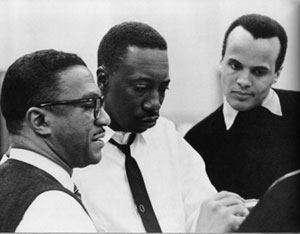Rummaging around in the proverbial shoebox of old photos from an old Euro vacation, i ran across a Throwback Thursday-worthy shot of me tickling the ivories on Antonín Dvořák’s own ivory-colored piano.
The photo was taken at the Dvorak Museum in a leafy section of Prague, in a restored Baroque mansion called – and, no, I’m not making this up – “Villa Amerika” – appropriate for the composer who became so famous in the New World, I suppose! I recall it was in a different location when I visited there in the late ’90s, but today, the white piano now gets pride of place in a small concert hall on the second floor, perched below an ornate frescoed ceiling.
But it got me to wondering about the Museum and more still about its Liberace-esque gilded white grand. Did Dvorak really live there? Did he actually play that instrument? And what kind of a piano was it, exactly?
The answers: 1) No, Dvorak actually lived in a small place not far away, on Zitna street. But the Museum holds a lot of his various artifacts, including his viola.
2) Doubtful. Since I visited, the Museum has subsequently acquired Dvorak’s actual piano, a beautiful mahogany 1879 Bösendorfer, built in Vienna.
3) The piano, it turns out, is a Petrof, the storied family-owned Czech manufacturer run by a fifth-generation descendent of founder Antonin Petrof, born just two years before Dvorak. And therein lies a tale!
It turns out that the company went into business in 1864 in the central Czech town of Hradec Králové, about two hours east of Prague, after young Antonin returned from an apprenticeship in Vienna and persuaded his father to turn their cabinet-making business into a piano factory. And the apogee of success happened for both “Tonys” at about the same time: Just as Dvorak was returning from “Amerika” and about to take up the directorship of the Prague Conservatory, Antonín Petrof is appointed by the Emperor as the court piano-builder for the Austro-Hungarian Empire.
But after that the story becomes a tale of booms, busts, war, and then the advent of the Iron Curtain. In 1948, the Petrof factory was nationalized, and became a state-run factory of a profoundly diminished reputation until the Petrof family got their company back in 1993. And if you do the math, that means that the Petrof company is 150 years old this year!
Read more about the Petrof Piano Saga here: “an amazing story of courage, determination, and a family’s extraordinary commitment to exemplary piano building tradition...and check out this video visit to the Petrof Piano factory below, replete with the roll call (with a few hilarious misspellings) of Petrof piano artists,including Ray Charles (who even had one in his home), Count Basie, Bill Evans, Mal Waldron, Lynne Arriale, Richard Clayderman (!), and Jacques Loussier.
Further research reveals that the Petrof pianos have long been the house-supplied instruments in the storied Rudolfinum in Prague, where their rather heavy action and even regulation was preferred by such luminaries as Rudolf Firkusny, Arturo Benedetti Michelangeli, and Ivan Moravec. (One of Moravec’s great recordings: a 1963 disc of pieces by Chopin, Mozart, and Beethoven, was recorded on a Petrof.)
Then there’s the Petrof on display in the glittering concert hall in Prague Castle. Check out this video of violinist Josef Suk and pianist Jan Panenka playing Dvorak, natch:
But I was still curious to hear what that gilded white Petrof in the Dvorak museum sounded like. So, after a lot of interet scouring, I did come up with a grainy video containing Dvorak Romance for violin and piano, Op. 11, as well as Chopin’s Ballade No. 3. Incomplete performances, sadly, but complete enough to reveal that Dvorak’s white Petrov looks far better than it sounds…




















You must be logged in to post a comment.